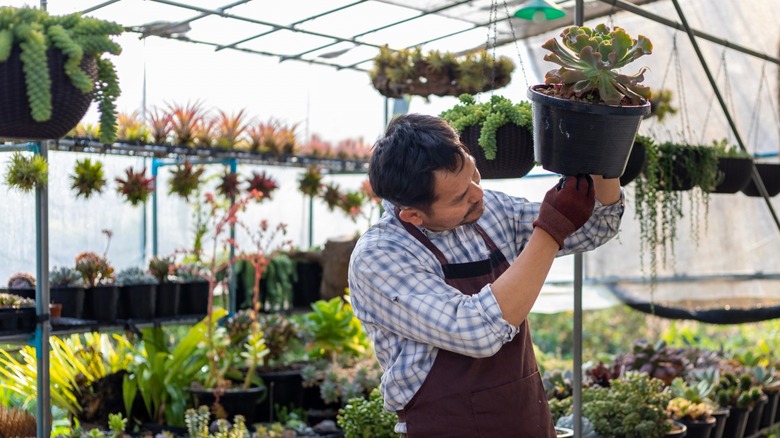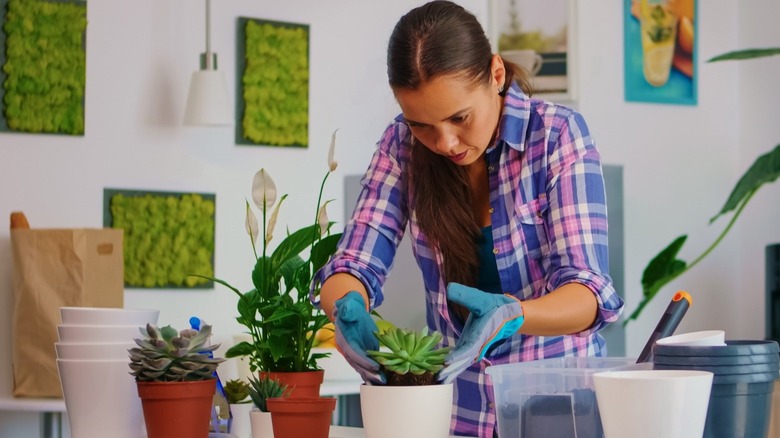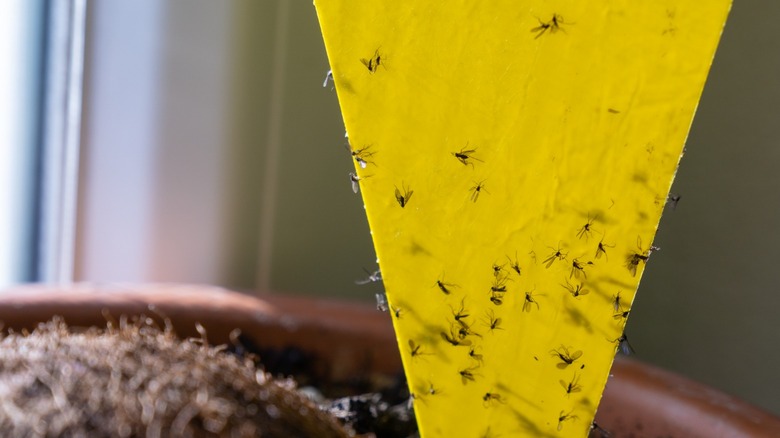Always Check For This Before Bringing Succulents Indoors This Fall
Succulents are wonderful for growing both inside and outside your home, but they need to be overwintered indoors when temperatures reach lower than 40 degrees Fahrenheit. If you fancy yourself a gardener, chances are you have several different plants you bring inside and treat as houseplants for part of the year, anyway. However, succulents in particular are vulnerable to a very common houseplant pest called fungus gnats that can infest the soil. It's important to check for these before bringing them inside, and we'll explain how in this post.
In fact, it will be important to check all plants for any signs of pests or infestation before bringing them indoors for the winter. After all, you don't want them to infect all your other plants since they will be trapped in an enclosed environment! When common outdoor pests are brought indoors, this can create infestations fast. And who wants to add more microscopic insects to the fully stocked menagerie you already have inside your home? Certainly not us!
How to inspect your succulents for fungus gnats before bringing them indoors
Luckily, succulents for the most part aren't plagued by too many pests. When they are, one common infestation is from fungus gnats. Many houseplants require moist soil to thrive, but for succulents it's different. They're known for storing lots of water in their leaves and fleshy parts, such as with aloe vera leaves. Since these plants are inherently so drought-tolerant, if their soil is kept consistently moist, it will begin to attract tiny gnats. Fungus gnats breed in the soil.
Check your succulents for signs of fungus gnats by turning up a little bit of soil near the base of the plant. Although tiny, if you look closely you'll see shiny, clear-colored larvae. You might even see them flying around. If you aren't sure and want to be, cut a couple slices off of a potato and set them on top of the soil around the base of the plant. Check them again in a couple of days by turning them upside down and looking for the larvae, which will be feeding on the potato slices if they're present.
What to do about fungus gnats if you have them
Fortunately, there are a few different natural remedies for fungus gnats, should you be unlucky enough to find signs of an infestation. Make sure none of your potting mix contains peat moss, or other water-holding materials for planting succulents. Additionally, from this point forward, make sure you allow the soil to dry out at least an inch or two down in-between waterings. This simple act alone will kill the larvae present, as well as prohibit any eggs from hatching.
You can use yellow sticky traps that work similarly to sticky flypaper, but in the fungus gnat's favorite color: yellow! This will catch adults that can lay eggs if you don't get rid of them. Alternatively, you can make a DIY trap in a shallow dish or container from half water and half apple cider vinegar. If you prefer a spray, you can make an effective DIY pesticide from peppermint, cinnamon, and sesame oils and water. To avoid all of that in the first place, however, it's best to inspect the soil of your succulents to make sure you don't bring them indoors in the fall.


